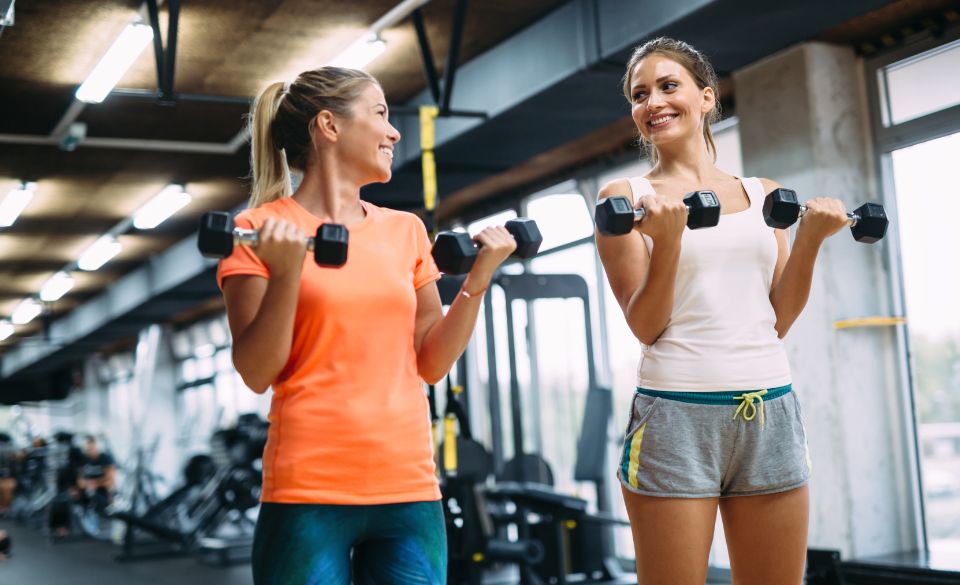
The Best Type of Exercise for Anxiety: Finding Your Personal Path to Relief
Page Contents
We all experience moments of stress and anxiety in our lives. It’s a natural response to the demands and challenges we face. While there are various strategies to manage anxiety, one powerful tool is exercise. Engaging in physical activity not only benefits our physical health but also has a profound impact on our mental and emotional well-being. In this article, we’ll explore the best types of exercise for anxiety and how you can find your personal path to relief.
The Science Behind Exercise and Anxiety
Exercise has long been recognized as a beneficial tool for managing anxiety, but what exactly is the science behind its positive effects on our mental well-being? Let’s delve into the mechanisms that make exercise such a powerful antidote to anxiety.
When we engage in physical activity, our bodies release endorphins, often referred to as “feel-good” hormones. These endorphins interact with receptors in our brain, triggering positive feelings and reducing the perception of pain and stress. They act as natural mood elevators, helping to alleviate anxiety and promote a sense of well-being.
Furthermore, exercise increases the production of neurotransmitters like serotonin and dopamine. Serotonin is known as the “happy hormone” and is involved in regulating mood, sleep, and appetite. Dopamine is associated with pleasure and reward. By increasing the levels of these neurotransmitters, exercise helps to balance mood and promote feelings of happiness and contentment.
Regular exercise also has a positive impact on our stress response. When we experience anxiety, our bodies go into “fight-or-flight” mode, releasing stress hormones like cortisol. Prolonged periods of high cortisol levels can contribute to chronic anxiety and other negative health effects. Exercise helps to reduce cortisol levels in the body, leading to a more balanced stress response and a greater sense of calm.
Additionally, engaging in physical activity can divert our attention away from anxious thoughts and worries. By focusing on the movement and sensations of our bodies, we enter a state of mindfulness, where our minds become fully present in the present moment. This mindfulness aspect of exercise helps to break the cycle of anxious thoughts and promotes a sense of relaxation and clarity.
Moreover, exercise provides an opportunity for social interaction and engagement. Joining group exercise classes, participating in team sports, or even just going for a walk with a friend can enhance social connections and combat feelings of loneliness and isolation, which are often associated with anxiety.
Aerobic Exercises: Boosting Your Mood and Reducing Anxiety
Aerobic exercises, also known as cardiovascular exercises, involve continuous and rhythmic movements that elevate your heart rate. These exercises have been shown to be particularly effective in reducing anxiety symptoms. Activities such as running, cycling, swimming, or brisk walking fall into this category. Studies have demonstrated that regular aerobic exercise can significantly decrease anxiety levels, improve mood, and enhance overall mental health. Engaging in aerobic exercises for at least 30 minutes, three to five times a week, can yield noticeable benefits for anxiety reduction.
The Power of Yoga and Mind-Body Connection
Another type of exercise that has gained popularity for its calming and anxiety-relieving effects is yoga. Yoga combines physical postures, breathing exercises, and meditation, fostering a mind-body connection that promotes relaxation and mindfulness. The slow and deliberate movements in yoga help activate the body’s relaxation response, reducing stress hormones and promoting a sense of calm. Numerous studies have highlighted the positive impact of regular yoga practice on anxiety symptoms, including decreased levels of cortisol (the stress hormone) and improved overall well-being. If you’re seeking a holistic approach to managing anxiety, incorporating yoga into your routine may prove beneficial.
Strength Training: Empowering Your Mind and Body
While aerobic exercises and yoga are often recommended for anxiety relief, don’t overlook the power of strength training. Engaging in resistance exercises like weightlifting or bodyweight exercises can have a significant impact on anxiety. Strength training not only strengthens your muscles but also builds mental resilience. The sense of empowerment and accomplishment that comes from challenging and overcoming physical obstacles can translate into increased confidence and a more resilient mindset. Additionally, strength training can improve sleep quality, boost self-esteem, and reduce symptoms of depression, all of which can indirectly contribute to anxiety reduction.
Other Considerations for Managing Anxiety Through Exercise
While aerobic exercises, yoga, and strength training are commonly recommended for anxiety relief, it’s essential to consider a few additional factors when incorporating exercise into your anxiety management routine.
Finding What Motivates You
The key to sticking with an exercise routine is finding activities that you genuinely enjoy. Explore different types of exercise and choose those that resonate with you. It could be dancing, hiking, playing a sport, or practicing martial arts. When you genuinely enjoy the activity, you’re more likely to stick with it, making it a sustainable part of your anxiety management strategy.
Consistency is Key
Consistency plays a vital role in reaping the long-term benefits of exercise for anxiety. Aim for regular exercise sessions, ideally incorporating physical activity into your weekly routine. Consistency helps your body adapt to exercise, improves mood regulation, and establishes a routine that can provide structure and stability in managing anxiety symptoms.
Listen to Your Body
While exercise can be an excellent tool for anxiety relief, it’s crucial to listen to your body’s cues and not overdo it. Pushing yourself too hard or ignoring signs of fatigue can lead to increased stress and potential injury. Respect your body’s limits and allow for rest and recovery days. Remember, the goal is to find a healthy balance that supports your mental well-being.
Seek Professional Guidance
If you’re new to exercise or have specific concerns regarding your anxiety or physical health, consider seeking guidance from a healthcare professional or a certified personal trainer. They can provide personalized advice, create an exercise plan tailored to your needs, and ensure you’re engaging in exercises that are safe and appropriate for your current condition.
The Journey to Anxiety Relief
In the pursuit of anxiety relief, exercise can be a valuable ally. Whether it’s aerobic exercises, yoga, strength training, or a combination of different activities, the best type of exercise for anxiety is the one that resonates with you and helps you find balance and peace of mind. Remember that everyone’s journey is unique, and it may take some trial and error to discover what works best for you. Embrace the process, be patient with yourself, and celebrate each step forward on your path to anxiety relief through exercise. With dedication, self-care, and a commitment to your well-being, you can harness the power of exercise to manage and overcome anxiety, leading to a happier and healthier life.



